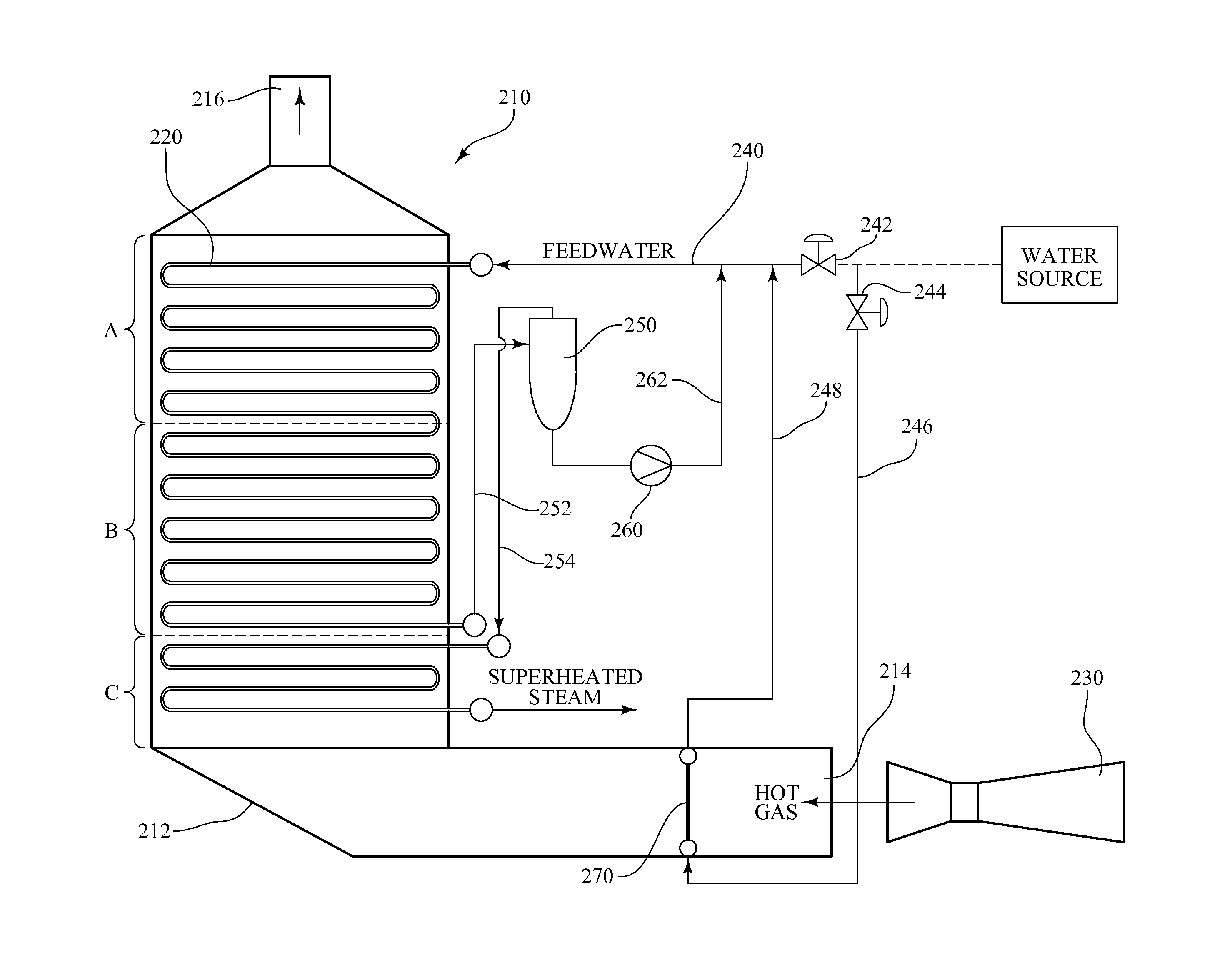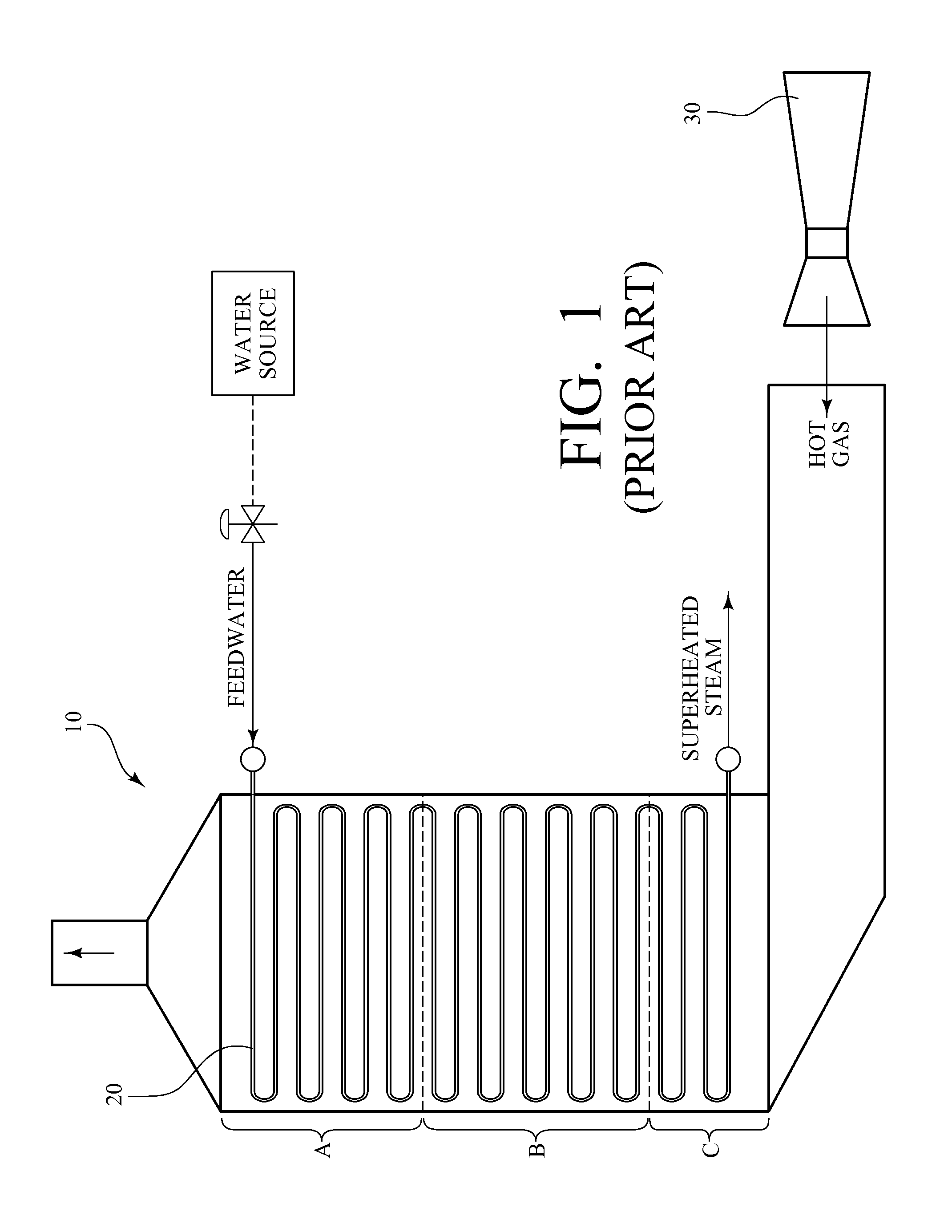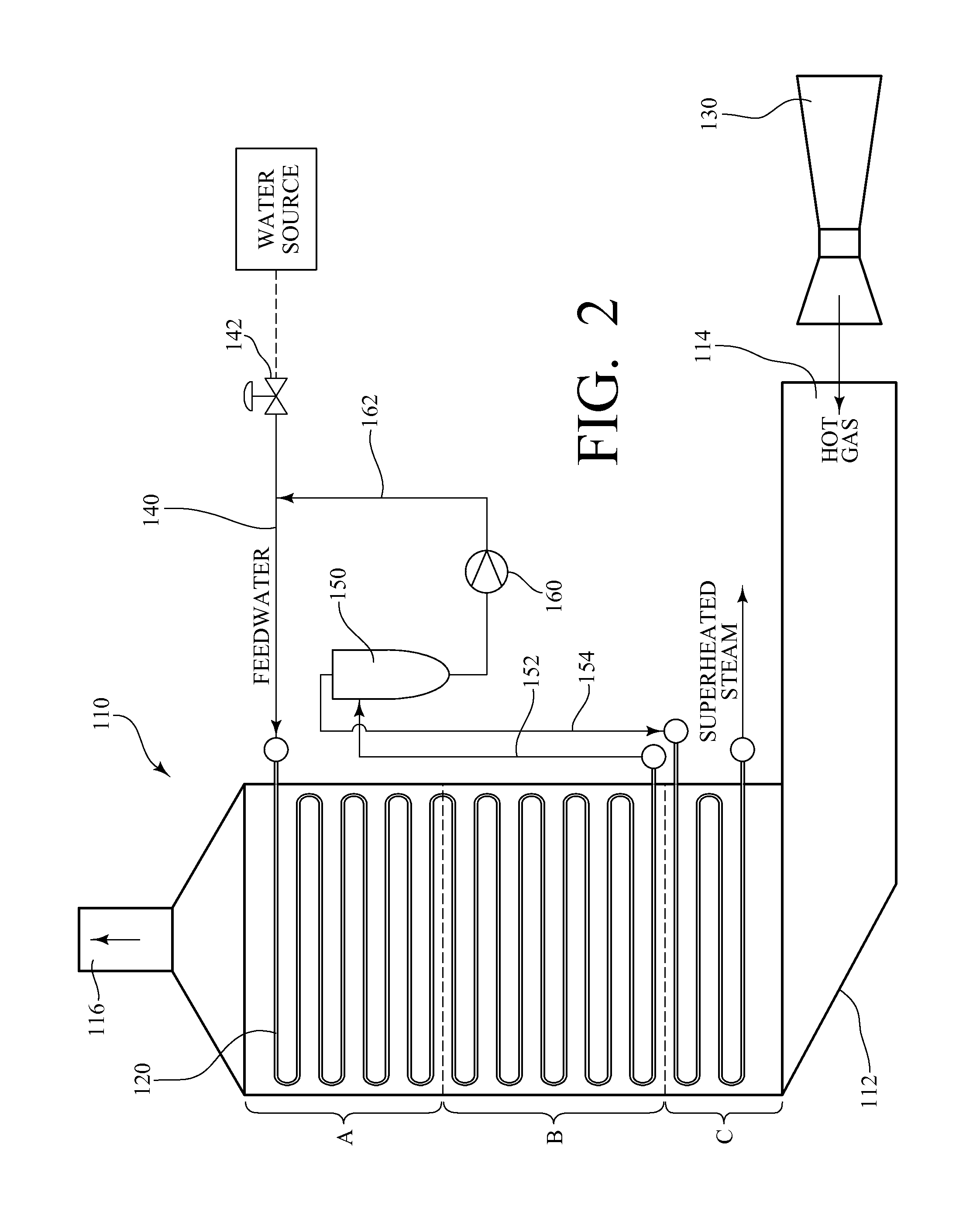Once-through steam generator
a generator and steam technology, applied in water supply installation, steam separation arrangements, lighting and heating apparatuses, etc., can solve the problems of reducing the service life of the boiler, so as to reduce the problem of thermal fatigue stress, prevent or minimize thermal shock.
- Summary
- Abstract
- Description
- Claims
- Application Information
AI Technical Summary
Benefits of technology
Problems solved by technology
Method used
Image
Examples
Embodiment Construction
[0013]The present invention is a once-through steam generator (OTSG) that includes auxiliary components that facilitate a wet start-up and / or a dry start-up without suffering from the above-described disadvantages of prior art constructions.
[0014]Referring now to FIG. 2, an exemplary OTSG 110 made in accordance with the present invention includes a duct 112 having an inlet end 114 and a discharge end 116. The duct 112 is connected to a source 130 of a hot gas (in this case, hot flue gas from a combustion turbine), such that the hot gas flows from the inlet end 114 to the discharge end 116. A tube bundle120 is positioned in the duct 112. and essentially spans the height of the duct 112, with the heat transfer tubes of the tube bundle 120 in a horizontal orientation. Although each heat transfer tube of the tube bundle 120 defines a single continuous path through the duct 112, the tube bundle 120 can nonetheless be characterized as having: an economizer section (A), which is nearest th...
PUM
 Login to View More
Login to View More Abstract
Description
Claims
Application Information
 Login to View More
Login to View More - R&D
- Intellectual Property
- Life Sciences
- Materials
- Tech Scout
- Unparalleled Data Quality
- Higher Quality Content
- 60% Fewer Hallucinations
Browse by: Latest US Patents, China's latest patents, Technical Efficacy Thesaurus, Application Domain, Technology Topic, Popular Technical Reports.
© 2025 PatSnap. All rights reserved.Legal|Privacy policy|Modern Slavery Act Transparency Statement|Sitemap|About US| Contact US: help@patsnap.com



